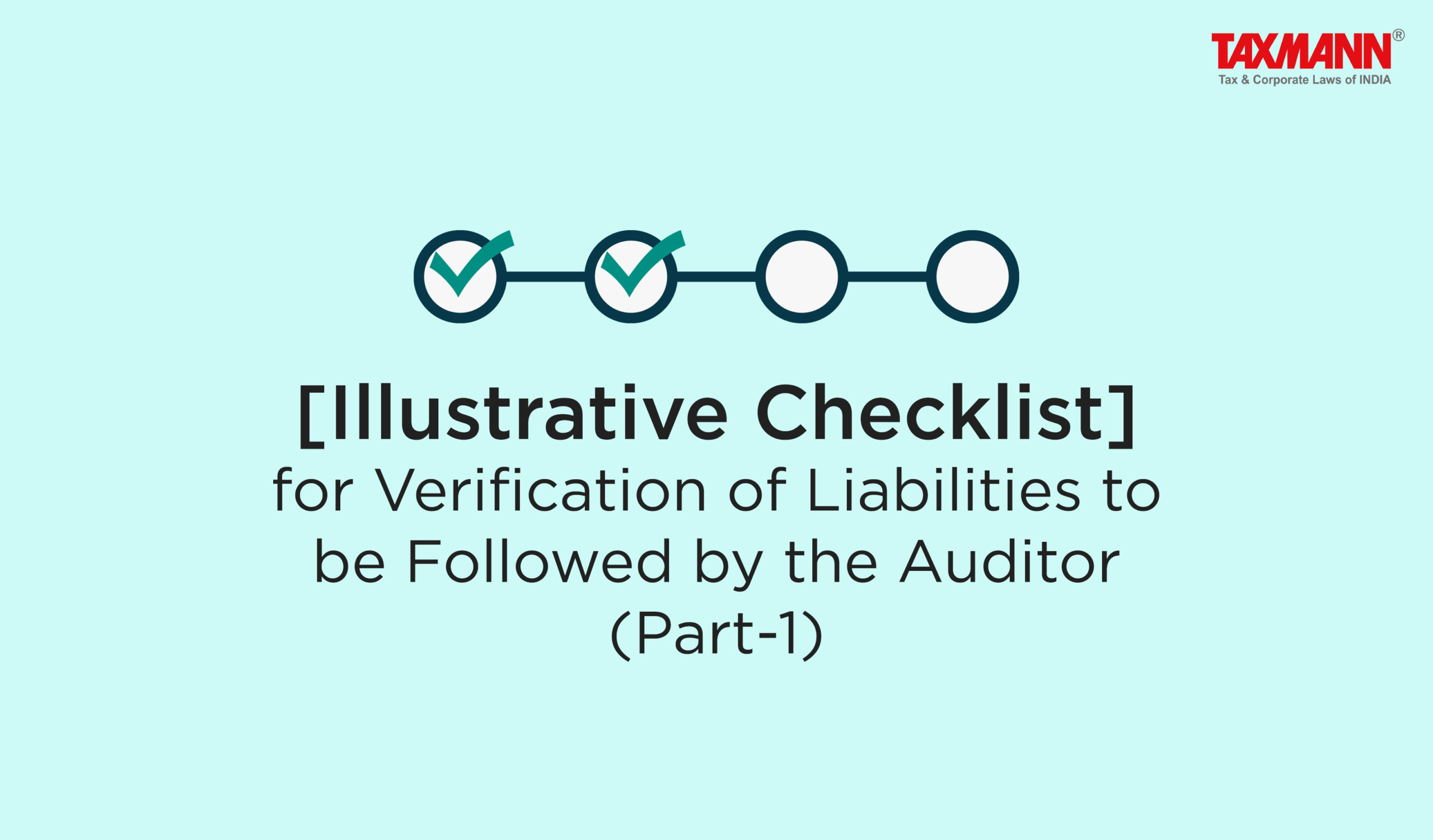[Illustrative Checklist] for Verification of Liabilities to be Followed by the Auditor (Part-1)
- Blog|News|Account & Audit|
- 2 Min Read
- By Taxmann
- |
- Last Updated on 6 July, 2023
As an essential part of the auditing process, the verification of liabilities is crucial for ensuring the accuracy and reliability of an entity’s financial statements. Liabilities represent the obligations and debts owed by the entity, which can encompass various categories, such as loans, provisions, taxes, gratuity, and more. To methodically assess these liabilities during an audit, auditors employ an illustrative checklist that helps guide their examination and evaluation. This checklist aims to ensure that the liabilities are appropriately recorded, measured, and disclosed in accordance with applicable accounting standards and regulatory requirements.
The following illustrative checklist outlines the key areas that auditors should consider while verifying liabilities. By meticulously examining aspects of loans and borrowings, Trade Creditors and Other Current Liabilities, provisions for taxes, gratuity, bonuses, dividends, and other provisions, auditors can gain a comprehensive understanding of the entity’s financial position and ascertain the reasonableness and adequacy of the reported liabilities.
I. Has the auditor verified whether the loans obtained by the entity are within its borrowing powers?
II. Whether the auditor has verified the purpose for which the Loan was taken has been verified?
III. Whether the loans taken from the bank have been utilized for the purpose for which the loan has been taken?
IV. Did the auditor conduct an examination of relevant records to assess the validity and accuracy of the loans?
V. In the case of loans and advances from banks, financial institutions, and others, has the auditor checked if the book balances match the statements provided by the lenders?
VI. Was the auditor responsible for examining any reconciliation statements, if prepared by the entity, related to loans and advances from banks, financial institutions, and others?
Click Here To Read The Full Story
Disclaimer: The content/information published on the website is only for general information of the user and shall not be construed as legal advice. While the Taxmann has exercised reasonable efforts to ensure the veracity of information/content published, Taxmann shall be under no liability in any manner whatsoever for incorrect information, if any.

Taxmann Publications has a dedicated in-house Research & Editorial Team. This team consists of a team of Chartered Accountants, Company Secretaries, and Lawyers. This team works under the guidance and supervision of editor-in-chief Mr Rakesh Bhargava.
The Research and Editorial Team is responsible for developing reliable and accurate content for the readers. The team follows the six-sigma approach to achieve the benchmark of zero error in its publications and research platforms. The team ensures that the following publication guidelines are thoroughly followed while developing the content:
- The statutory material is obtained only from the authorized and reliable sources
- All the latest developments in the judicial and legislative fields are covered
- Prepare the analytical write-ups on current, controversial, and important issues to help the readers to understand the concept and its implications
- Every content published by Taxmann is complete, accurate and lucid
- All evidence-based statements are supported with proper reference to Section, Circular No., Notification No. or citations
- The golden rules of grammar, style and consistency are thoroughly followed
- Font and size that’s easy to read and remain consistent across all imprint and digital publications are applied








 CA | CS | CMA
CA | CS | CMA


